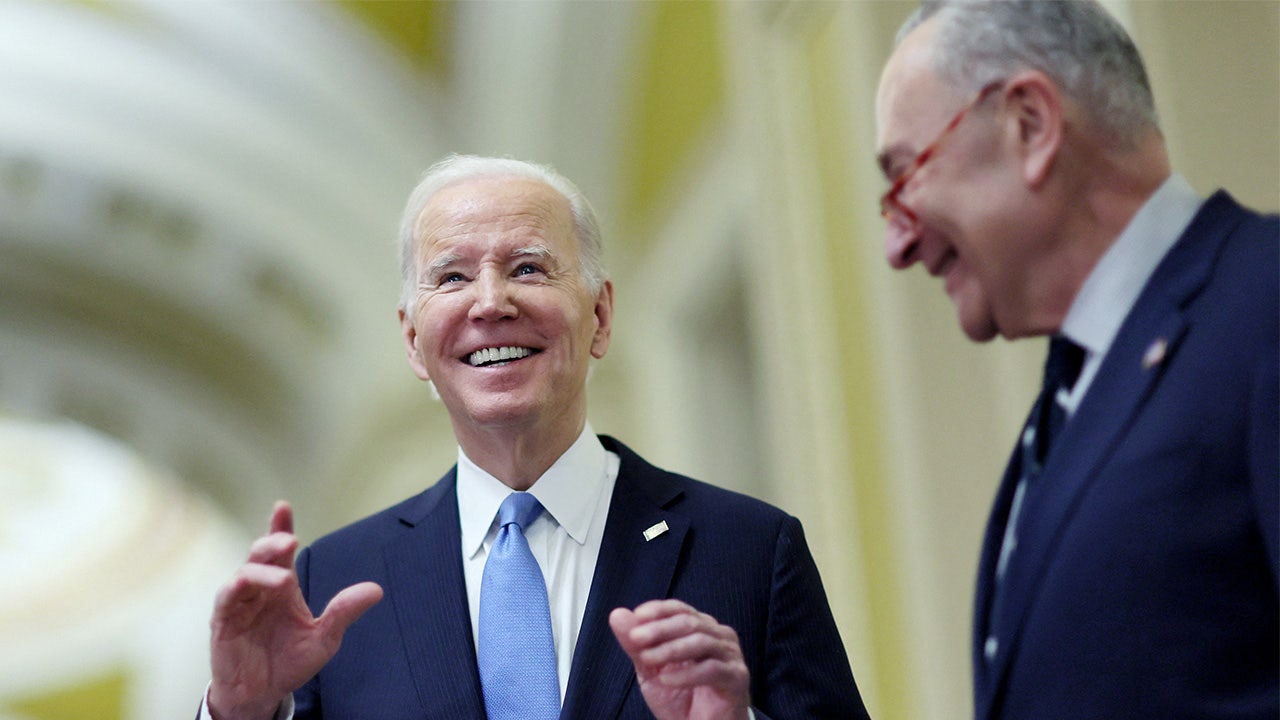Technology
Andor’s second season hits Disney Plus in April
/cdn.vox-cdn.com/uploads/chorus_asset/file/25724283/andor_s2_tt_a4d0fd8c.png)
Star Wars spinoff Andor is finally coming back for its second and final season on Disney Plus April 22nd, 2025, Disney announced during its D23 event in Brazil yesterday. And in a clear nod to Rogue One, the 2016 film it’s setting up, it has a new logo with the subtitle “A Star Wars Story.”
The new season will complete the so far excellent story of Cassian Andor’s (Diego Luna) transformation from street rat to hard-bitten rebel alliance spy in the lead-up to the events of Rogue One. Its 12-episode run will be broken up into blocks of three episodes, each covering three-day events taking place in a four-year period, as TheWrap notes.
We’ll see some first-season characters return, including Luthen, Mon Mothma (Genevieve O’Reilly), and Saw Guerrera (Forest Whitaker). Alan Tudyk is expected to show up, reprising his role as the charming imperial droid, K-2SO, and Ben Mendelsohn will be there, playing his Rogue One villain, Orson Krennic.

Technology
Elon Musk is directing harassment toward individual federal workers
/cdn.vox-cdn.com/uploads/chorus_asset/file/24083660/STK171_L_Allen_Musk_02.jpg)
Elon Musk is, in addition to many other things, now the co-lead of the currently nonexistent Department of Government Efficiency (DOGE) advisory group. Now, before it even gets rolling, he has begun singling out individual government employees he says are emblematic of the government’s bloat and posting about them to his hundreds of millions of followers on X.
Earlier this week, as first reported by The Wall Street Journal, the X user “datahazard” shared a screenshot on X highlighting the role of Ashley Thomas, the Director of Climate Diversification at the US International Development Finance Corporation, saying, “I don’t think the US Taxpayer should pay for the employment” of that role. Musk reposted it, adding the comment “so many fake jobs” in a post with more than 33 million views.
As the WSJ notes, Musk’s followers have responded in exactly the way you’d expect: with a flood of memes and harassment targeting Thomas, whose LinkedIn and Facebook pages are now private. Everett Kelley, president of the American Federation of Government Employees, told the WSJ that the posts “are aimed at sowing terror and fear at federal employees.”
Flooding targets with harassment is a tactic Musk has done in the past, including calling caver Vernon Unsworth a “pedo guy,” criticizing a former Twitter exec following his offer to buy the company, and suggesting that head of trust and safety Yoel Roth was sympathetic to pedophilia. All, of course, under the guise of “free speech.”
The ensuing harassment, of course, is precisely the point: Musk has systematically turned X into a megaphone for his views and has wielded that megaphone to whatever end he finds funny or useful. Musk and DOGE co-lead Vivek Ramaswamy have promised to do much of their work in public (and sometimes by X poll), too, which means this kind of pointed attention is likely headed toward many other civil servants in the near future.
Technology
Strava’s API debacle highlights the messiness of fitness data
/cdn.vox-cdn.com/uploads/chorus_asset/file/24435784/tokyostrava.jpg)
A few days ago, Strava upset its users over some restrictive API changes. It might seem odd for one app’s users to fume over an API, but at the heart of the matter is the inherent messiness of fitness data.
Here’s a typical scenario. Say you’re all in on Garmin’s platform. You use their watches for running and strength training. Then, you pick up a Peloton bike for indoor cycling. Well, Garmin devices aren’t compatible with Peloton bikes because the two companies haven’t struck a direct deal with one another for data sharing. So, to get your heart rate on the Peloton bike, you buy a chest strap. And then you decide to train for a race, so you sign up for one of those digital coaching platforms — the kind where a personal trainer reviews your workouts and builds you a customized plan.
The dilemma is now you have three separate apps where your workout history is stored, with three separate interfaces — and none of them with the whole picture of your training.
There are a number of ways you could consolidate that data, but in this scenario, the simplest is to upload all your workouts into Strava and then import all that Strava data into the coaching app.
This kind of scenario has come up dozens of times throughout my wearables testing. Most recently, it came up when I reviewed a Mobvoi connected desk treadmill. I didn’t like its native app, but trying to get the data into my preferred apps was a nightmare. At the end of the day, it was easiest for me to go through Strava.
The reality is many smaller fitness apps and wearable makers don’t have the resources to strike up direct data integrations with the thousands of other fitness apps and devices on the market. It’s much easier for everyone to use Strava’s API and call it a day. And unlike Apple’s HealthKit API or Google’s Health Connect, Strava is platform-agnostic.
Where things get really murky is third-party fitness platforms that extrapolate their own insights from Strava data — a no-no under the new API terms.
Take a third-party platform like VeloViewer. The whole idea behind VeloViewer is to give more in-depth insights into Strava data, including 3D maps, charts, yearly activity recaps, and leaderboards. This is a great option for folks who want more info than what’s natively available in Strava, but the new API changes break many of the aforementioned features. As you might imagine, VeloViewer users — many of whom say they only pay a Strava subscription to use VeloViewer — are pissed. VeloViewer has since released a statement saying it’s working with Strava to resolve the issue, but it doesn’t change the fact that Strava holds all the cards.
Admittedly, this is a niche problem. Most people use one or maybe two fitness apps with their smartwatch, and this isn’t really an issue. But for those of us who want the freedom of using multiple devices and apps across various platforms? It’s a sobering reminder that it only takes Strava changing the rules to break a carefully crafted system.
Technology
The Verge’s guide to Black Friday 2024
/cdn.vox-cdn.com/uploads/chorus_asset/file/25703800/247350_CMBF_PACKAGE_ART_CVirginia_LEDE_2040x1360.jpg)
These days, Black Friday isn’t so much a single-day shopping holiday as it is an ever-expanding, monthslong event that often begins as early as October. The 24-hour deal blitz that once was the focus of newspaper headlines and mobs outside of stores is no more, which makes knowing when and where you should be spending your cash all the more confusing.
Luckily, we’re here to help. Over the next month or so, we’ll be poring through scores of presale spreadsheets and thousands upon thousands of deals to separate the real discounts from the unexciting, made-up bargains every retailer seems to hawk around the holidays. We’ll have tips on how to find the best deals and when to shop, and we’ll continue to flag the most compelling sales in the run-up to Black Friday proper on November 29th.
And if a month of sales is not enough, you’ll have another shot at tackling your holiday wish list come December 2nd. We’ll be rounding up the best deals on 4K TVs, laptops, phones, robot vacuums, noise-canceling headphones, and other Verge-approved gadgets throughout all of Cyber Week. So stay tuned!
-
Business1 week ago
Column: OpenAI just scored a huge victory in a copyright case … or did it?
-

 Health1 week ago
Health1 week agoBird flu leaves teen in critical condition after country's first reported case
-

 Business6 days ago
Business6 days agoColumn: Molly White's message for journalists going freelance — be ready for the pitfalls
-

 Science3 days ago
Science3 days agoTrump nominates Dr. Oz to head Medicare and Medicaid and help take on 'illness industrial complex'
-

 Politics5 days ago
Politics5 days agoTrump taps FCC member Brendan Carr to lead agency: 'Warrior for Free Speech'
-
/cdn.vox-cdn.com/uploads/chorus_asset/file/25739950/247386_Elon_Musk_Open_AI_CVirginia.jpg)
/cdn.vox-cdn.com/uploads/chorus_asset/file/25739950/247386_Elon_Musk_Open_AI_CVirginia.jpg) Technology5 days ago
Technology5 days agoInside Elon Musk’s messy breakup with OpenAI
-

 Lifestyle5 days ago
Lifestyle5 days agoSome in the U.S. farm industry are alarmed by Trump's embrace of RFK Jr. and tariffs
-

 World5 days ago
World5 days agoProtesters in Slovakia rally against Robert Fico’s populist government















